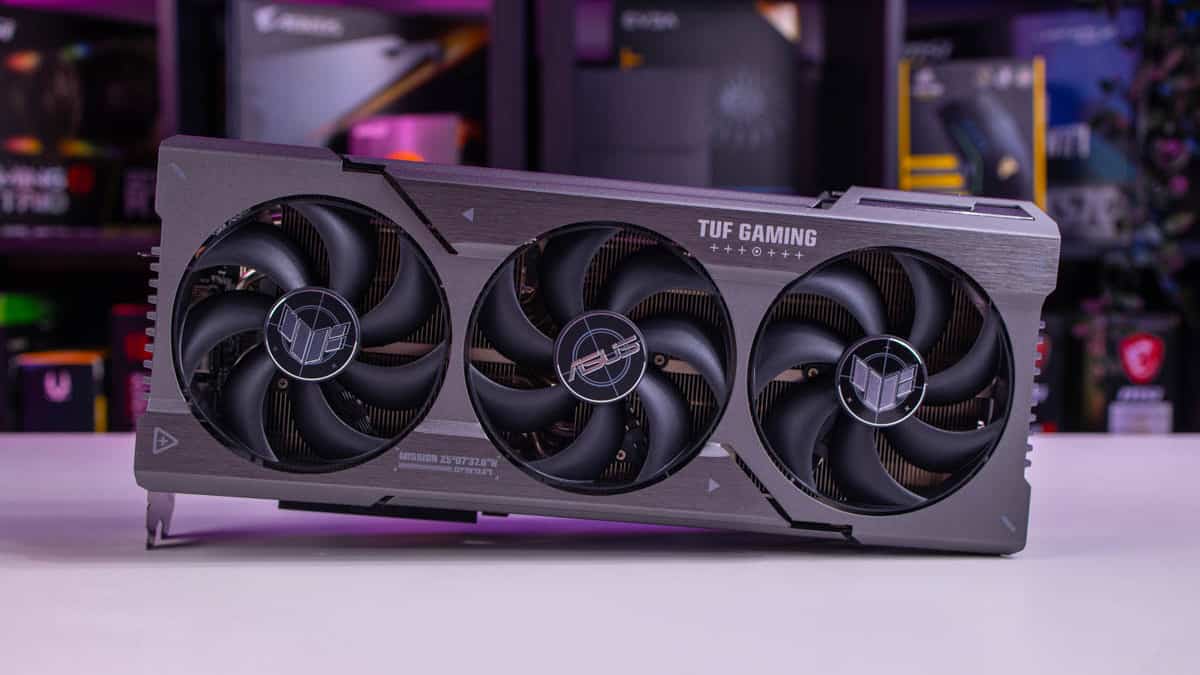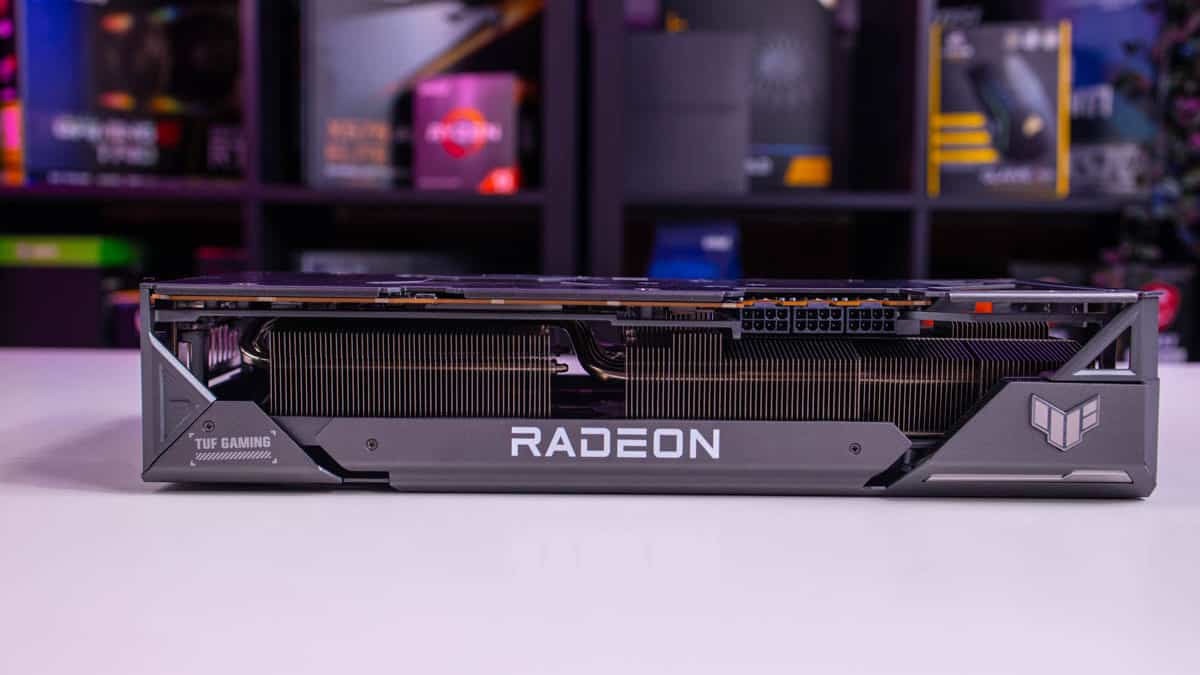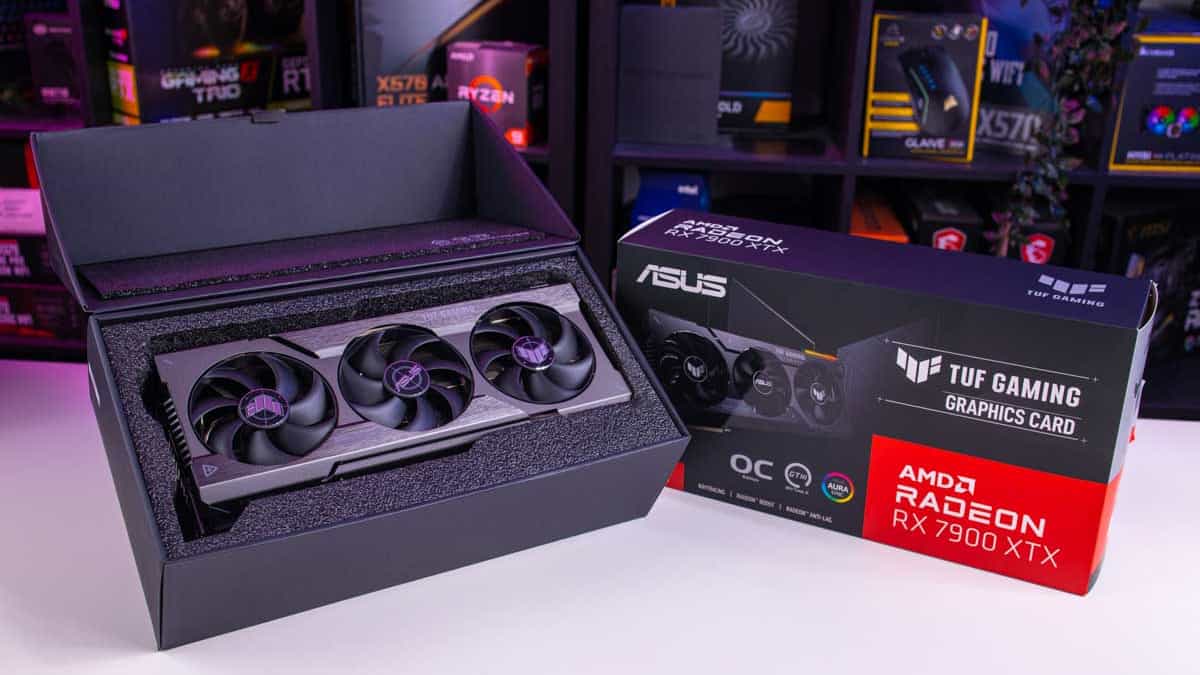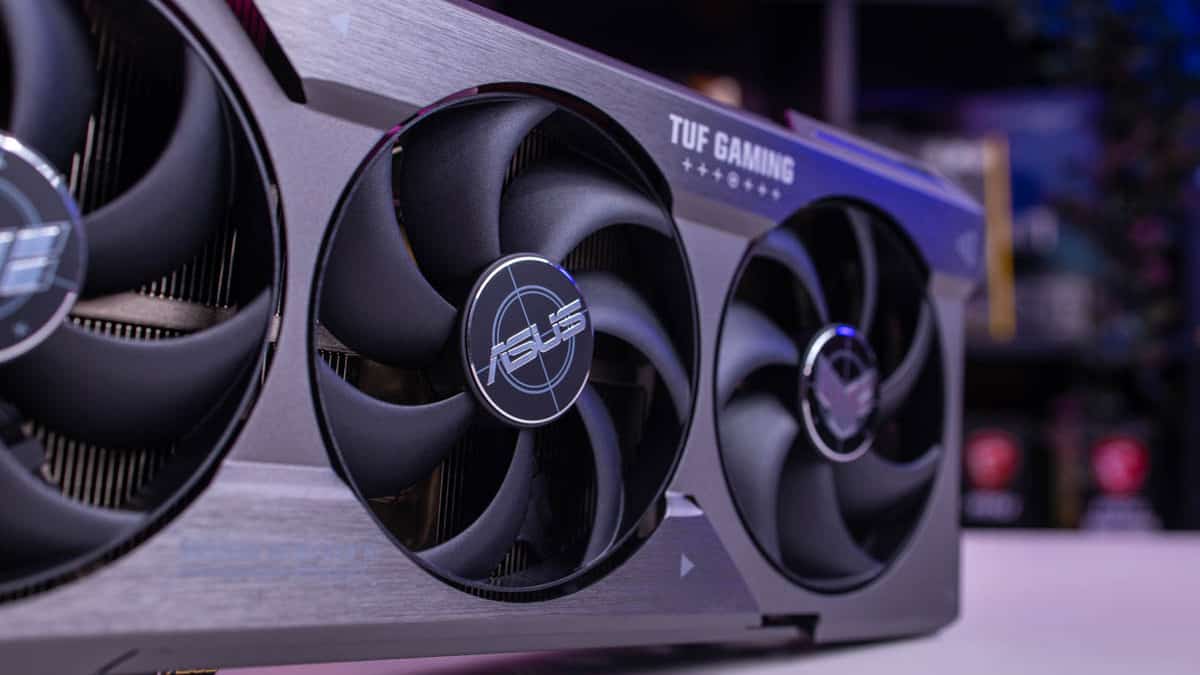AMD Radeon RX 7900 XTX review – is it worth it?
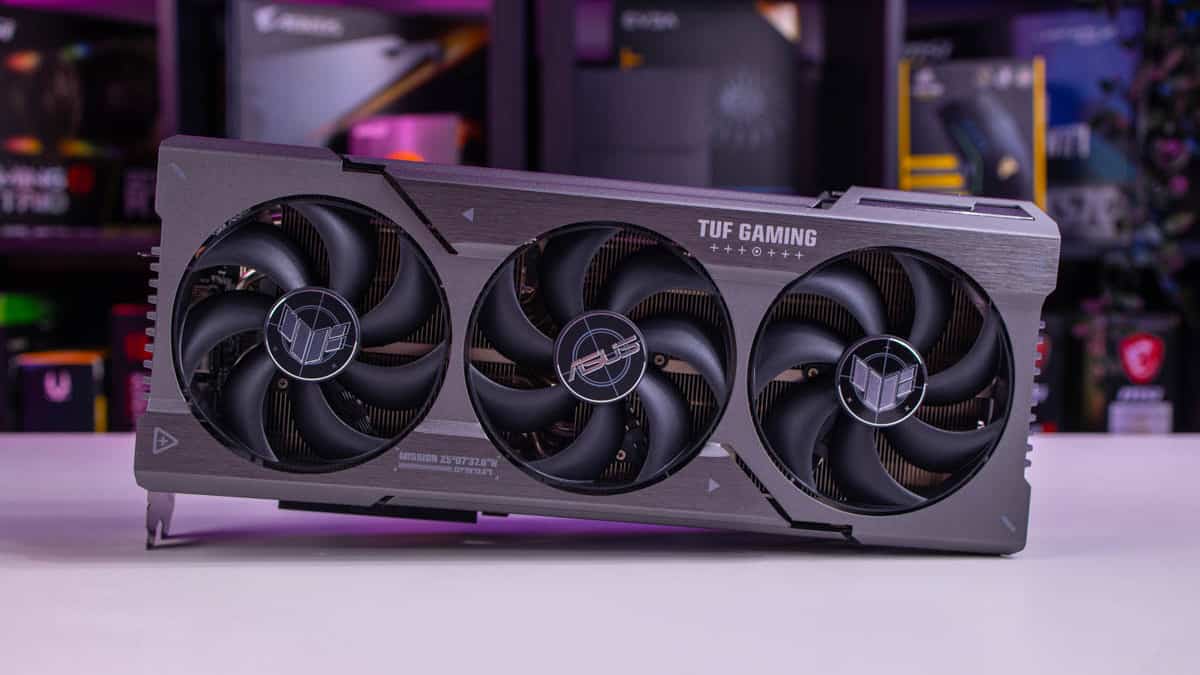
Table of Contents
If you’re in the market for a high-performance video card for 4K gaming then AMD’s RDNA 3 flagship delivers in spades and can confidently be considered among the best GPUs in 2025. Our full AMD Radeon RX 7900 XTX review goes over the graphics card’s price, specs, design, and performance to help you make an informed purchasing decision. Continue reading to see why Team Red stands triumphantly in the GPU market right now.
AMD Radeon RX 7900 XTX price
The AMD Radeon RX 7900 XTX is the flagship GPU of Team Red’s current lineup and it doesn’t come too cheap. The RX 7900 XTX is available from $999 depending on whether you buy the AMD-made Reference model or a similarly priced partner variant. Our review unit is the ASUS TUF Gaming RTX 7900 XTX OC which comes in a little pricier at $1,099 – a $100 difference – but that’s far from the only way our unit differs from the standard.
This positions the AMD Radeon RX 7900 XT in league with the RTX 4080 Super which debuted earlier this year also with a starting rate of $999. Previously, Team Red had undercut both of Nvidia’s high-end models, the RTX 4090 ($1,599) and RTX 4080 ($1,199) but the gap has been narrowed now. Considering the capabilities of this card, it’s arguably still more of a value play, and we’ll get on to the specifics further down the page.

- GPU: Navi 31
- Stream Processors: 6,144
- VRAM: 24GB GDDR6
- Memory bus width: 384-bit
- Bandwidth: 960 GB/s
- Base clock speed: 1,929 MHz
The AMD Radeon RX 7900 XTX is a stellar graphics card for 4K gaming with enough under the hood to achieve high frame rates natively. It also excels in 1440p with over 100fps in the majority of cases, and will be even stronger when factoring in FSR and Fluid Motion Frames in the future.
- Strong pricing
- Leading 4K performance
- Bolstered by FSR 3
- Far from the cheapest RDNA 3
- Prices vary between partners
AMD Radeon RX 7900 XTX key specs
Regardless of which version you opt for, the fundamentals are the same. That’s because the AMD Radeon RX 7900 XTX features 24GB GDDR6 memory on a 384-bit memory bus with a bandwidth of 960 GB/sec. It features a fairly high base clock of 1,929 MHz with a Game Clock of 2,365 MHz. Depending on your variant, you may have overclocking functionality; at a baseline, AMD’s GPU can do up to 2,498 MHz boost clock. In comparison, our ASUS TUF review unit can do up to 2,615 MHz in OC mode (4.8% more).
For reference, that’s the same memory pool available as with the Nvidia GeForce RTX 4090, however, it’s the slower GDDR6 memory in Team Red’s case here. This is likely a cost-saving measure to keep pricing competitive against Team Green but it does mean a slower card as a result. We recommend checking out the RTX 4090 vs RTX 7900 XTX for the full perspective. Taken as a whole, the XTX features 6,144 Stream Processors with 284 Texture Mapping Units and 192 Render Output Units; still very high-end in 2025.
This shows the advancements made with RDNA 3 architecture over its predecessor thanks to TSMC’s 5nm process over its predecessor generation’s larger 7nm process, such as with the RX 6900 XT and RX 6950 XT. As far as leading graphics cards go, AMD has ticked all the right boxes in terms of hardware by building on the Navi 31 die, arming a card that’s ready for 4K and beyond when utilizing the likes of FSR for higher frames in games, but we’ll touch on that further down the page.
AMD Radeon RX 7900 XTX key design

Team Red won favor initially with the reveal of the RX 7900 XTX’s design and it’s not hard to see why. At a time when its rival was getting larger and more hungry, it decided to take a different approach by releasing a high-end GPU that was a dual-slot design measuring in at just 11.3 x 4.3 x 2 inches (LxWxH). Arguably more impressive given the hardware packed in here is the fact that it just needs 2x 8-pin PCIe power connectors with no need for the likes of a 16-pin adapter as with Nvidia’s offerings.
If you’re buying the Reference model then you’ll be very happy with the installation process as it’s as plug-and-play as you can get. Further bolstered by a relatively reasonable 355 TDP. You’ll need at least a 750W PSU but considering the memory pool here, it could have been far worse. Things, however, get tricker when applying the same logic to our review unit, the ASUS TUF Gaming RX 7900 XTX OC model, as it’s a far bit chunkier, devaluing the original promise to some extent.
That’s because the ASUS TUF Gaming RX 7900 XTX measures in at a far larger 13.9 x 6.23 x 2.86 inches being significantly longer, thicker, and taller, owing to its considerably larger heatsink. It’s not just space you’ll have to worry about either. ASUS recommends a minimum 850W PSU here as you’ll need a total of 3x 8-pin PCIe power connectors. It’s also nearing a quad-slot GPU, double the thickness. If you’re after a smaller and less power-hungry version of the card, we recommend the former or a non-OC model.
With that said, there’s no taking away from how gorgeous ASUS’ partner card is. Yes, it’s a larger version by quite a margin, but features a level of cooling that few other partners can attest to with its triple fan setup, massive heatsink, and tank-like construction. If you want a card that will last you for many years then this one is about as bulletproof as they come, just ensure you’ve got one of the best PC cases available as no one likes building in cramped spaces.
AMD Radeon RX 7900 XTX gaming performance
In the testing conducted by BGFG’s Sebastian Kozlowski, the AMD Radeon RX 7900 XTX did soar across the board in 4K, its target resolution. As you can see below, the card had absolutely no problems in providing framerates well above 4K60 native and beyond in some of the industry’s most demanding games in the majority of cases. Naturally, the 1440p performance is a given, too, so whether you want high frame rates in QHD or no compromises 2160p, you should be well catered to here.
| Game | 4K | 1440p |
|---|---|---|
| CS:GO | 389 | 609 |
| Cyberpunk 2077 | 70 | 137 |
| Doom Eternal | 227 | 378 |
| Assassin’s Creed Valhalla | 107 | 161 |
| Far Cry 6 | 121 | 160 |
| Fortnite | 52 | 93 |
| Rainbow Six Siege | 198 | 394 |
| Shadow of the Tomb Raider | 147 | 263 |
| Overwatch 2 | 206 | 363 |
Barring one exception, the GPU absolutely delivers on maxed-out 4K and this is before factoring in the likes of FSR 3’s Fluid Motion Frames (frame generation) technology. As more games support this tech going forward, the video card will be further bolstered by the help of AI to boost the frames in the latest software. Given its bandwidth and available memory pool, this is going to play a pivotal role in ensuring its future for many years to come.
AMD Radeon RX 7900 XTX synthetic benchmarks
The AMD Radeon RX 7900 XTX is no slouch when it comes to our suite of industry-standard synthetic benchmarks either. This can be best evidenced through 3DMark with the GPU providing confident figures in the likes of Fire Strike Ultra, Time Spy Extreme, and Port Royal, all of which lean on the card’s 4K capabilities with native rendering, and the latter for ray tracing. It doesn’t quite measure up to what the RTX 4090 can do, but you’ll see no complaints given its more aggressive pricing.
| Software | Graphics | Overall |
|---|---|---|
| Fire Strike (1080p) | 66,704 | 51,687 |
| Fire Strike Extreme (1440p) | 39,660 | 36,702 |
| Fire Strike Ultra (4K) | 20,410 | 20,319 |
| Time Spy (DX 12) | 28,283 | 25,454 |
| Time Spy Extreme (4K) | 14,230 | 14,010 |
| Port Royal (Ray Tracing) | 15,315 | 15,315 |
Conclusion

For the best overall experience, you’re going to want to pair the XTX with a strong-performing Ryzen or Intel CPU and have a motherboard that’s ready to take on all it can do. In our testing, we chose to focus on the native performance instead of the FSR-bolstered (AMD’s answer to DLSS) numbers and askew the ray-tracing performance on this occasion. That’s because we wanted to paint the most accurate portrayal of what this GPU can do outside of the box without relying on its AI accelerators or ray accelerators.
Whether you’re planning on plugging in with HDMI or DisplayPort, make sure you’ve got one of the best gaming monitors to soak in what the 4K targeting video card can do with its enhanced memory bandwidth. A strong SSD will also aid gaming performance, and you’ll want to ensure your power supply meets the criteria for the GPU, especially if it features a larger cooler. As for how upscaling will play a part in its future, simply put, as games get more demanding, native rendering may take a backseat.

Is the AMD Radeon RX 7900 XTX worth it?
The RX 7900 XTX is an excellent high-end graphics card in 2025 and excels across the board in not only 1440p but also 4K with confident performance in the latest games. If you want true 4K gaming with the added VRAM when compared to the likes of the similarly priced RTX 4080 Super then this GPU delivers on all fronts. With that said, its pricing and size will vary depending on the partner card, so be careful when selecting the component for your next rig.
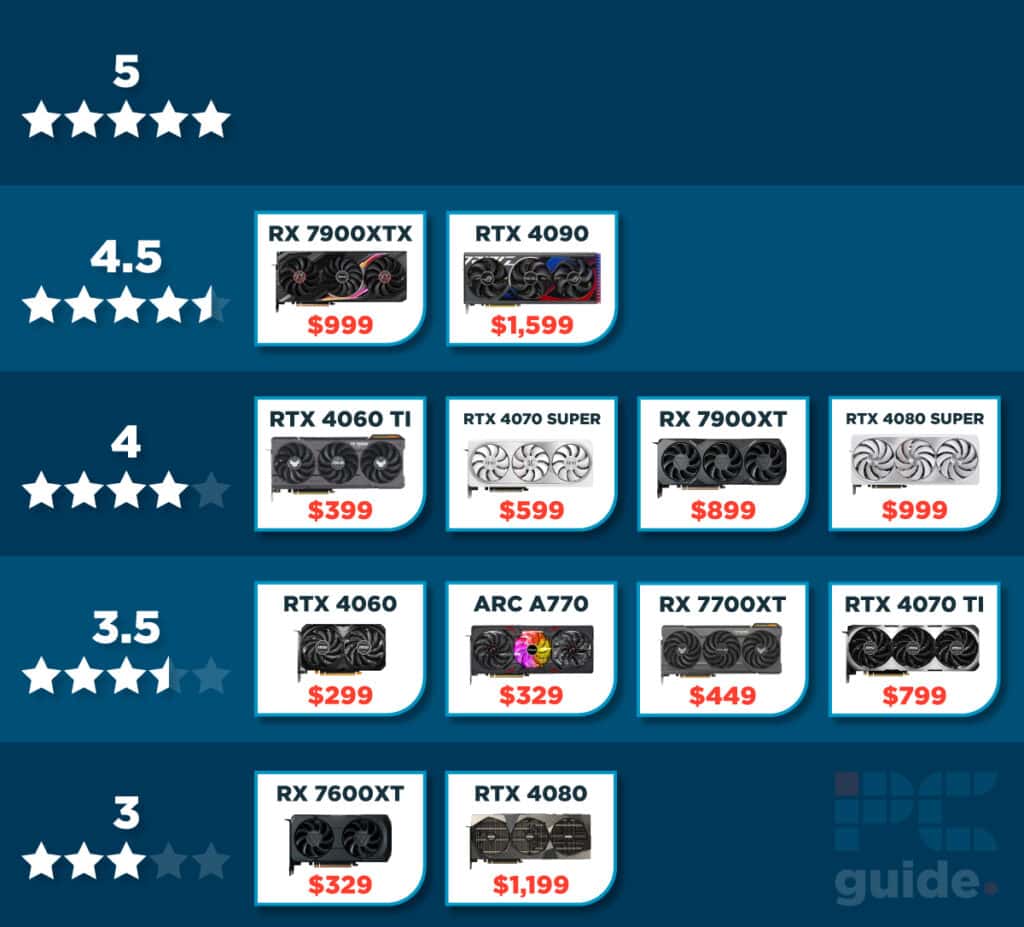
Copy by Aleksha McLoughlin ; Testing by Sebastian Kozlowski

